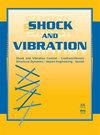一种增强真空腔中水声角反射器声散射特性的方法
IF 1.2
4区 工程技术
Q3 ACOUSTICS
引用次数: 0
摘要
为了解决水下角反射器目标强度和散射稳定性不理想的问题,提出了一种利用真空腔作为声反射层来增强水下角反射器声散射特性的方法。根据水反射层声阻抗失配原理,利用声波在真空条件下不能传播的特性,设计了真空腔角反射器。声真空反射层的理论声反射系数为1。与单层金属角反射器在频率和入射角方面进行了对比分析。针对水下角反射器的凹形结构,采用结构有限元软件ANSYS结合声学分析软件SYSNOISE对其声散射特性进行了模拟分析,并通过典型案例的水池实验验证了模拟计算与实验数据的一致性。结果表明:在相同反射面积下,真空腔水下角反射器散射强度大,抗声性能好,频率特性不明显,去耦效果好;目标回波强度值可提高2 dB,散射稳定性较好。整体重量减轻约20kg,具有相当的工程实用性,证明真腔角反射器是一种理想的水声反声装置。本文章由计算机程序翻译,如有差异,请以英文原文为准。
A Method for Enhancing the Acoustic Scattering Characteristics of Underwater Acoustic Corner Reflectors in Vacuum Cavities
To alleviate the problem of unsatisfactory target strength and scattering stability of an underwater corner reflector, a method to enhance the acoustic scattering characteristics using a vacuum cavity as an acoustic reflecting layer is proposed. According to the principle of acoustic impedance mismatch of a water-reflecting layer, a vacuum cavity corner reflector is designed to take advantage of the property that sound waves cannot propagate under vacuum conditions. The acoustic vacuum reflecting layer has a theoretical acoustic reflecting coefficient of one. Comparative analyses are carried out with the single-layer metal corner reflector in terms of frequency and angle of incidence. For the concave structure of the underwater corner reflector, the structural finite element software ANSYS combined with the acoustic analysis software SYSNOISE is used to simulate and analyse the acoustic scattering characteristics, and the consistency of the simulation calculations and experimental data is verified through the pool experiments for typical cases. The results show that under the same reflection area, the vacuum cavity underwater corner reflector has large scattering intensity, good antiacoustic performance, no obvious frequency characteristics, and good decoupling effects. The target echo intensity value can be increased by 2 dB for better scattering stability. The overall weight is reduced by about 20 kg, with considerable engineering practicality, proving that the true cavity corner reflector is an ideal underwater acoustic counter-acoustic device.
求助全文
通过发布文献求助,成功后即可免费获取论文全文。
去求助
来源期刊

Shock and Vibration
物理-工程:机械
CiteScore
3.40
自引率
6.20%
发文量
384
审稿时长
3 months
期刊介绍:
Shock and Vibration publishes papers on all aspects of shock and vibration, especially in relation to civil, mechanical and aerospace engineering applications, as well as transport, materials and geoscience. Papers may be theoretical or experimental, and either fundamental or highly applied.
 求助内容:
求助内容: 应助结果提醒方式:
应助结果提醒方式:


